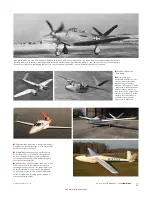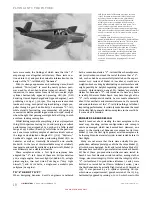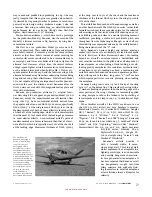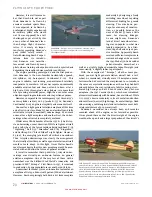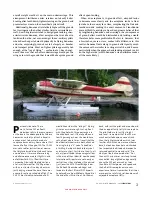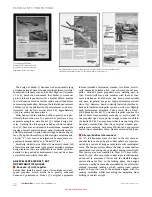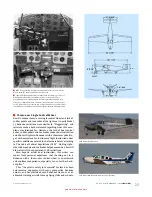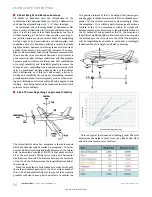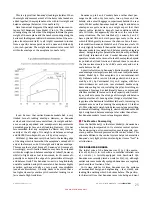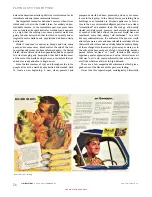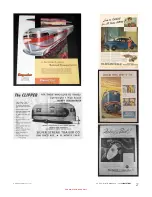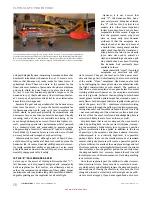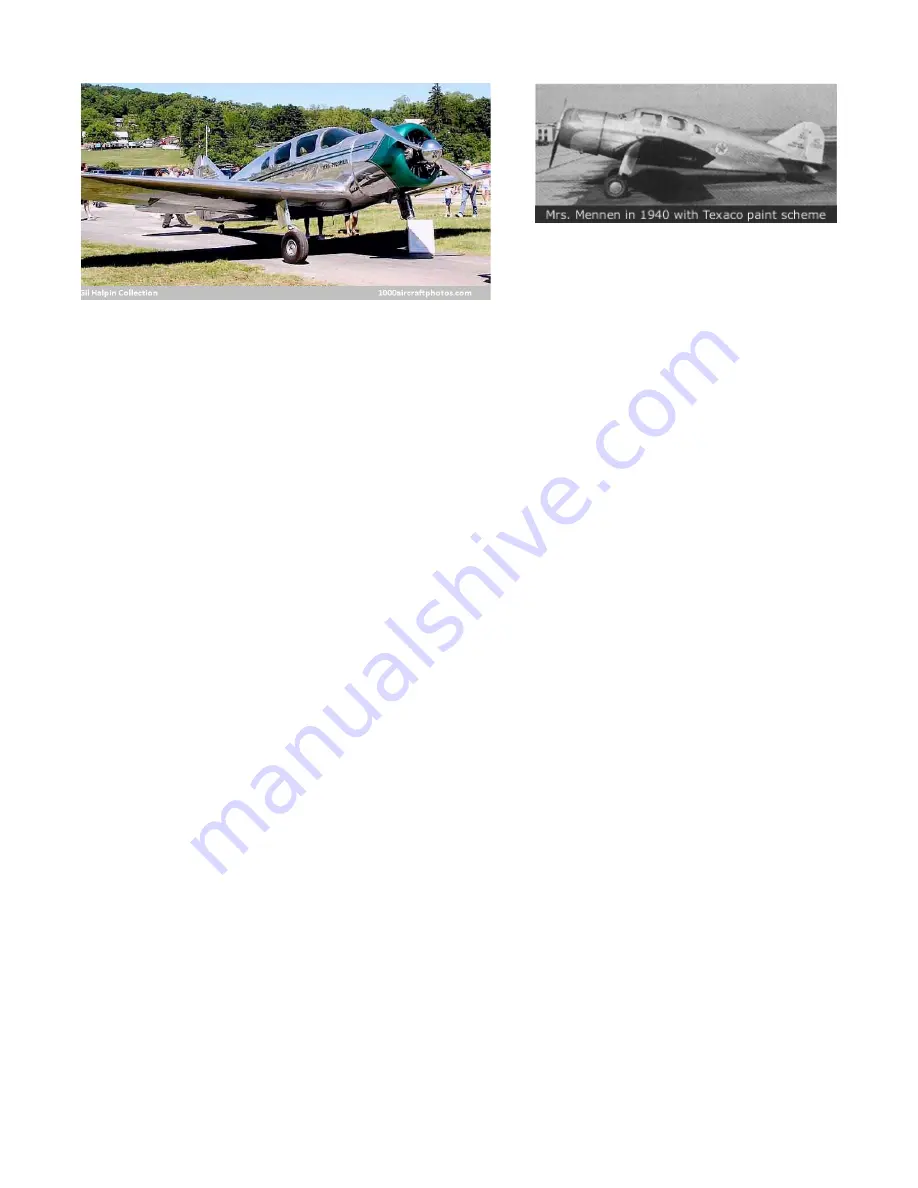
www.a2asimulations.com
ACCU-SIM V35B BONANZA
:::
A2A
SIMULATIONS
13
FOR SIMULATION USE ONLY
Rolled out of the factory on 9 September 1940, this was the last Spartan 7W, later called
“Mrs. Mennen.” It was originally purchased by Texaco, Inc. (now a subsidiary of Chevron
Corporation) for corporate use in the New York State/New England area. This magnificent
aeroplane cost $26,200.40 in 1940 ($467,029.62 in 2018 at a cumulative rate of inflation of
1,682.5%) and was one of five Spartan 7Ws owned by Texaco, who based this aircraft at
Roosevelt Field located in Mineola (now Garden City), New York.
This aeroplane was purchased by George
Mennen of the Mennen Company, Morristown,
New Jersey in the spring of 1969. It was then
painted “Mennen Green” and named “Mrs.
Mennen.” “Mrs. Mennen” was sold, traded and
bought by many different owners over the
years until it was purchased in October 2004 by
Will Mennen, George Mennen’s grandson.
“A BUILT- IN TAILWIND”
Walter Beech wanted his new aeroplane to set the standard
for quality and performance. It was to be something not yet
seen, something that one might to fly into the future.
He told his design staff to come up with something not
merely of 1945, but of 1955 and 1965 - and beyond. It had
to be a sleek, clean design, all- metal, simple (inexpensive)
to build, look sexy, go fast, carry four in comfort and have
a range of around 700 miles. These factors were imperative
if Beech was going to lead the post- war pack and attract
wealthy corporate customers.
It is well to recall that in 1945, as Walter Beech and his
team’s ideas for a new light aeroplane were accumulat-
ing, the current stars of aviation were all- metal, single-
engine, retractable undercarriage piston- engine fight-
ers – Mustangs, Corsairs, Spitfires, etc. These powerful,
sleek aeroplanes appeared fast even when sitting still and
they made the blood rush and the imagination soar just to
look upon them. Beech was determined that his new aero-
plane would be just like that. He wanted to build a high-
performance, light executive transport aeroplane with, as he
put it, “a built- in tailwind.”
At Walter Beech’s behest, Ted Wells, Beech’s Vice-
President of Engineering who had been instrumental in
the design of both the Model 17 “Staggerwing” and Model
18 “Twin Beech,” together with project engineer Ralph
Harman, set about the task of putting together a team of
creative aircraft designers. Their mission was to design an
entirely new single- engine aeroplane not only for the post-
war era, but for decades to come. Such an aeroplane had also
been Harman’s dream and he was highly delighted to have
the opportunity to be able to make it a reality.
It is reported that Beech’s employees and company officers
were extremely optimistic about Beech’s future given its
wartime experiences building powerful and sophisticated
all- metal aeroplanes. They rightly felt that they had a sig-
nificant “leg- up” on their competition and they were anx-
ious and ready to prove what they could do.
The design of what was to become “Bonanza” was very
much a team effort. Ralph Harmon was the overall Project
Engineer, also taking on responsibility for the design of the
interior and undercarriage. Jerry Gordon, Beech’s Chief of
Aerodynamics, created the shape of the wing and tail sur-
faces. Wilson Erhart designed the interior structure of the
wings. Alex Oderseff designed the fuselage. Noel Naidenoff
designed the fuel system and engine compartment. It is
a great compliment to the skills of these engineers that
Bonanza ultimately appeared to be the conception of a
single brilliant individual rather than the product of a com-
mittee that it was.
No doubt greatly influenced by Beech’s past success with
Model 17 as well as the success of rival Spartan Corporation,
Walter Beech decided from the outset not to include a trainer
or low- cost cruiser in Beech’s post- war menu.
4
That field,
it was thought, would soon be overfilled with “Cubs”,
“Champs” and the like. No, Beech’s new aeroplane was to
be aimed solely at the highest end of the light general avia-
tion aeroplane market. It was to be more than a means of
transportation; it was to be an objet de prestige like a Rolex or
a Rolls- Royce, something literally exclusive which only the
wealthiest could afford to obtain, the possession of which
would openly attest to the owner’s prosperity, sophistica-
tion and good taste.
As mentioned, Walter Beech was known to be a very for-
ward character in both his conceptions and his mode of
expression. Who else but such a very confident “Type A”
Summary of Contents for BONANZA ACCU-SIM V35B
Page 1: ...A2ASIMULATIONS BONANZA ACCU SIM V35B BONANZA ...
Page 3: ...A2ASIMULATIONS BONANZA ACCU SIM V35B BONANZA ...
Page 5: ...www a2asimulations com ACCU SIM V35B BONANZA A2ASIMULATIONS 5 FOR SIMULATION USE ONLY ...
Page 27: ...www a2asimulations com ACCU SIM V35B BONANZA A2ASIMULATIONS 27 FOR SIMULATION USE ONLY ...
Page 58: ......
Page 68: ...68 A2ASIMULATIONS ACCU SIM V35B BONANZA www a2asimulations com FOR SIMULATION USE ONLY ...
Page 112: ......

















